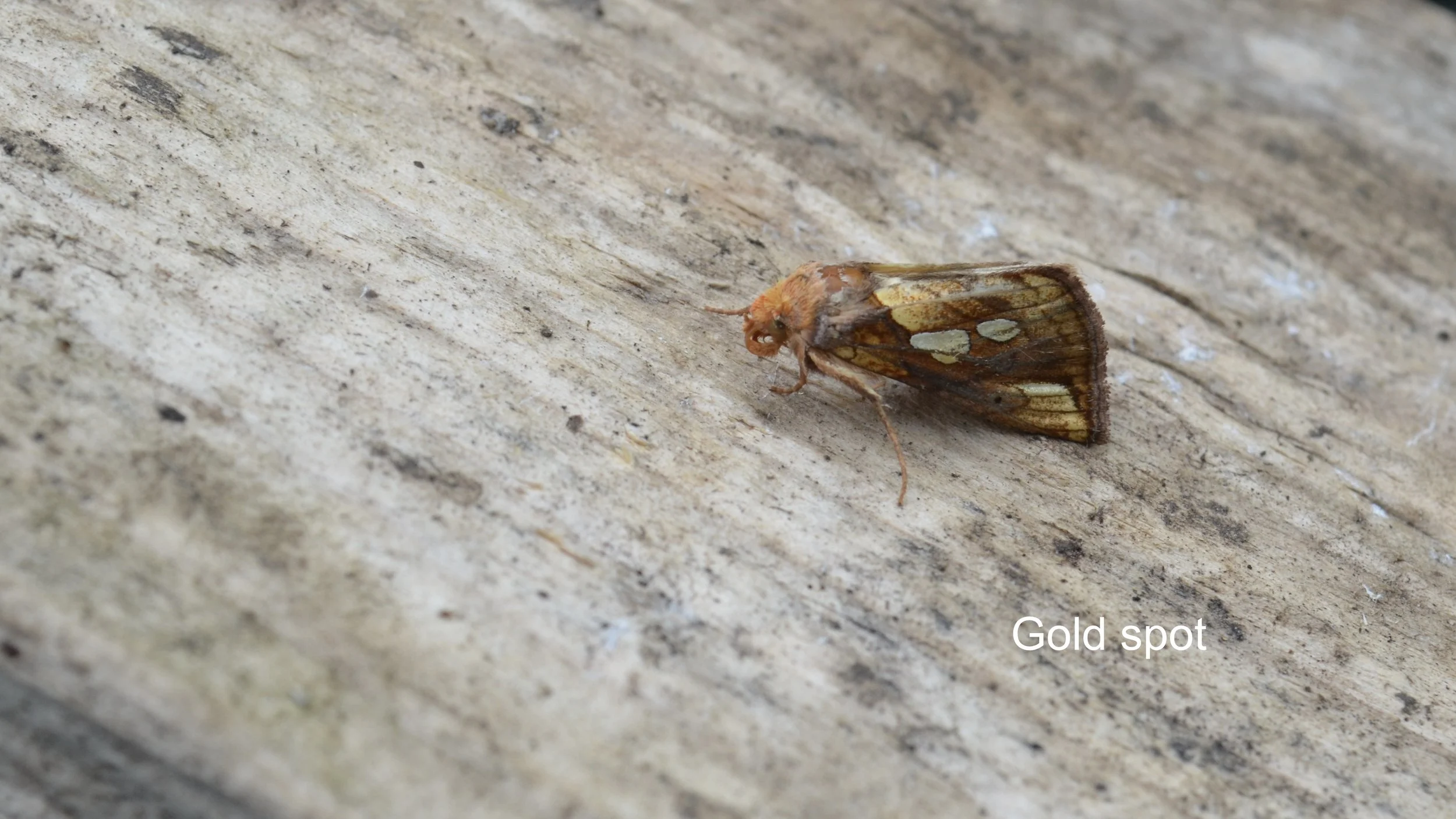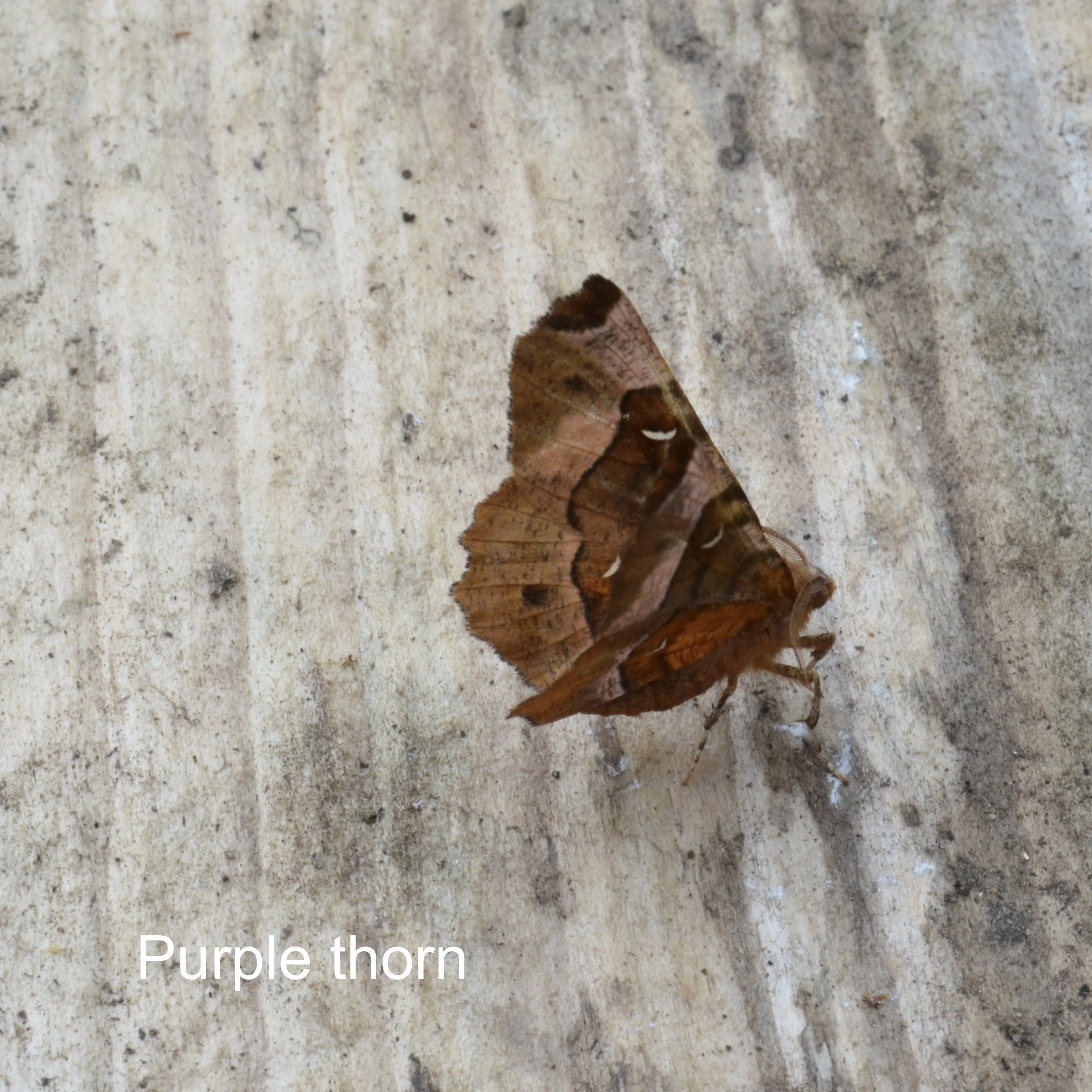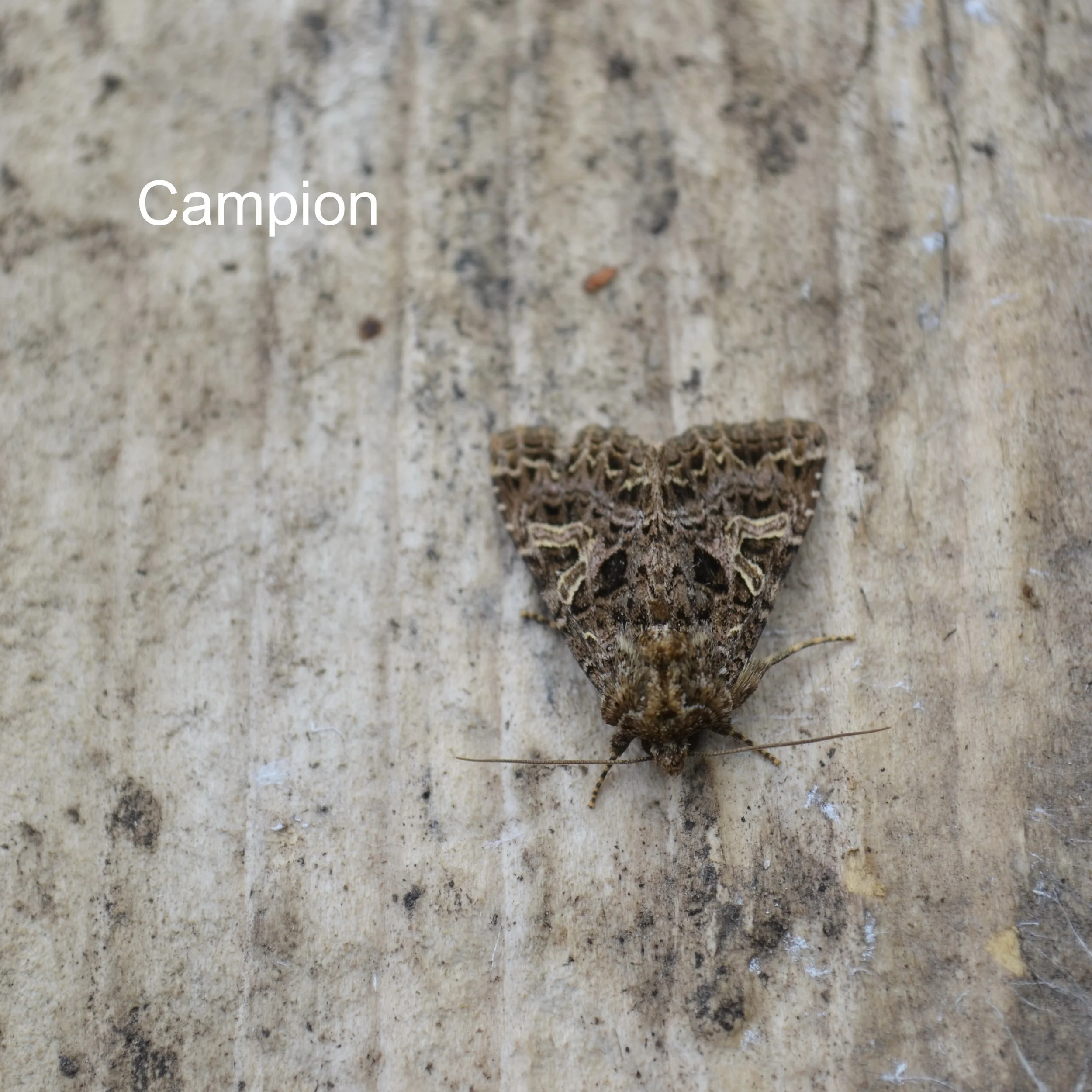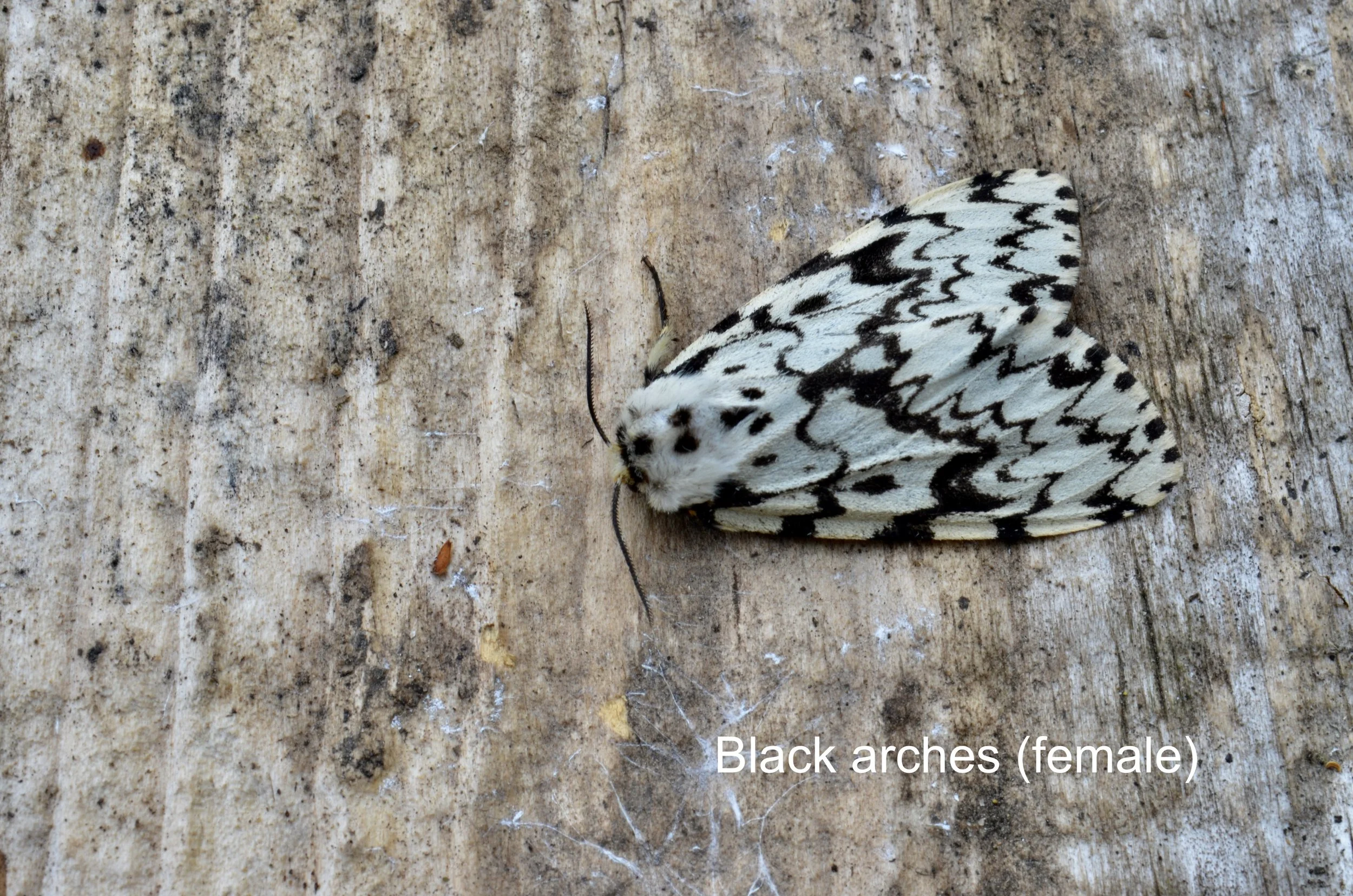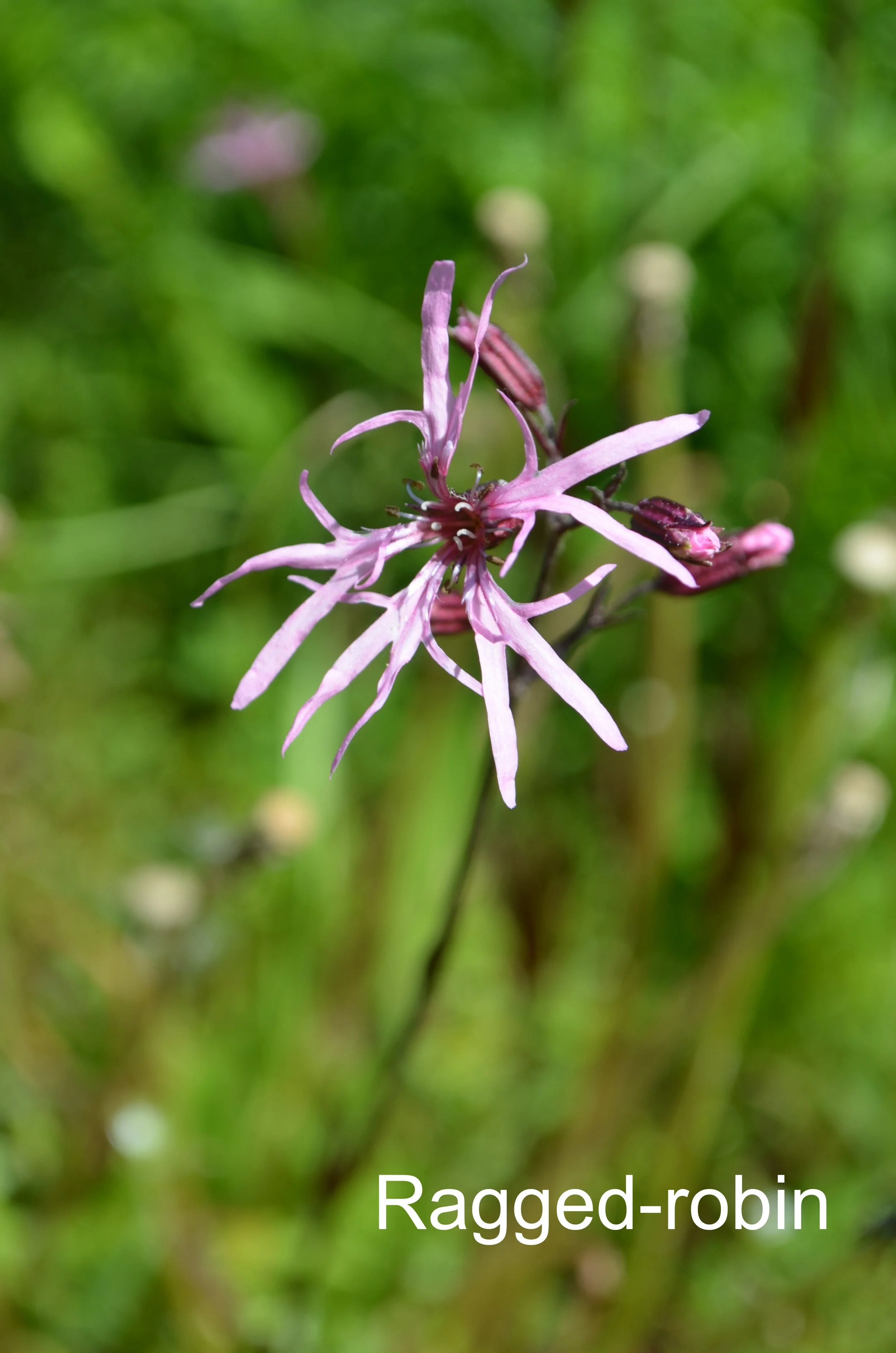Monitoring moths…
Into one of my favourite places in the garden -the Cedar Walk - made intimate at dusk sheltered by the understory of emerging birch and rowan within bramble, honeysuckle and guilder rose beneath pines.
Last night we were out with the mercury vapour light to monitor moths. In last night’s session we had 225 moths of 39 species.
The year slowly advances and different moths emerge: often beautiful in colour or patterning. Moth species often have a specific niche that they occupy for breeding.
Four from the 39 species-
Gold spot - larval food plants are sedges
Purple thorn - larval food plants are native deciduous trees
Campion - larval food plants are campions and ragged robin
Black arches (female) - larval food plants are oaks and sometimes conifers.
Sedges can be found around the edges of George’s Pond which we created in 2016.
We introduced red and white campion to the site as collected seed and ragged-robin as plug plants from seed we’d bought.
Neither moth campion or gold spot was evident in our early moth records so we may be able to take some credit for these two species being with us now.
Nothing rare or unusual but another really interesting session accompanied by the monotonous but welcome evening squeaks of young tawny owls.

